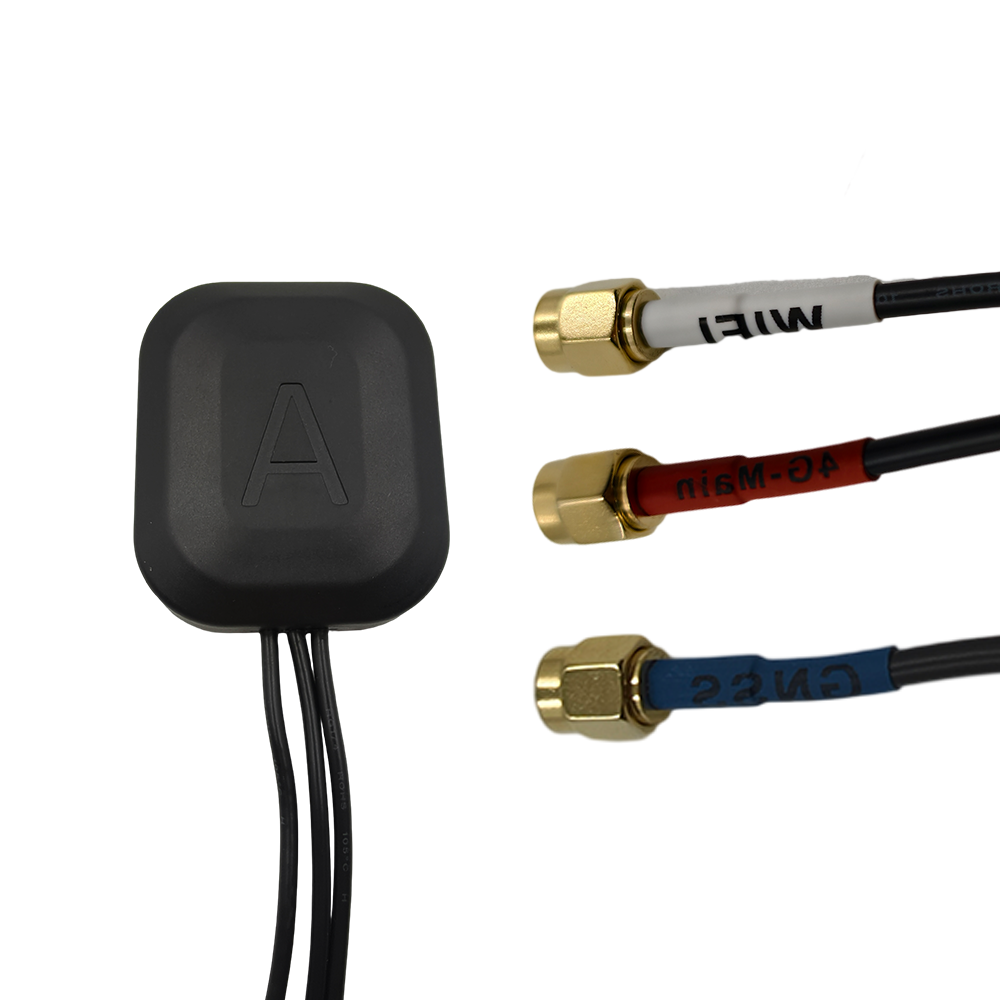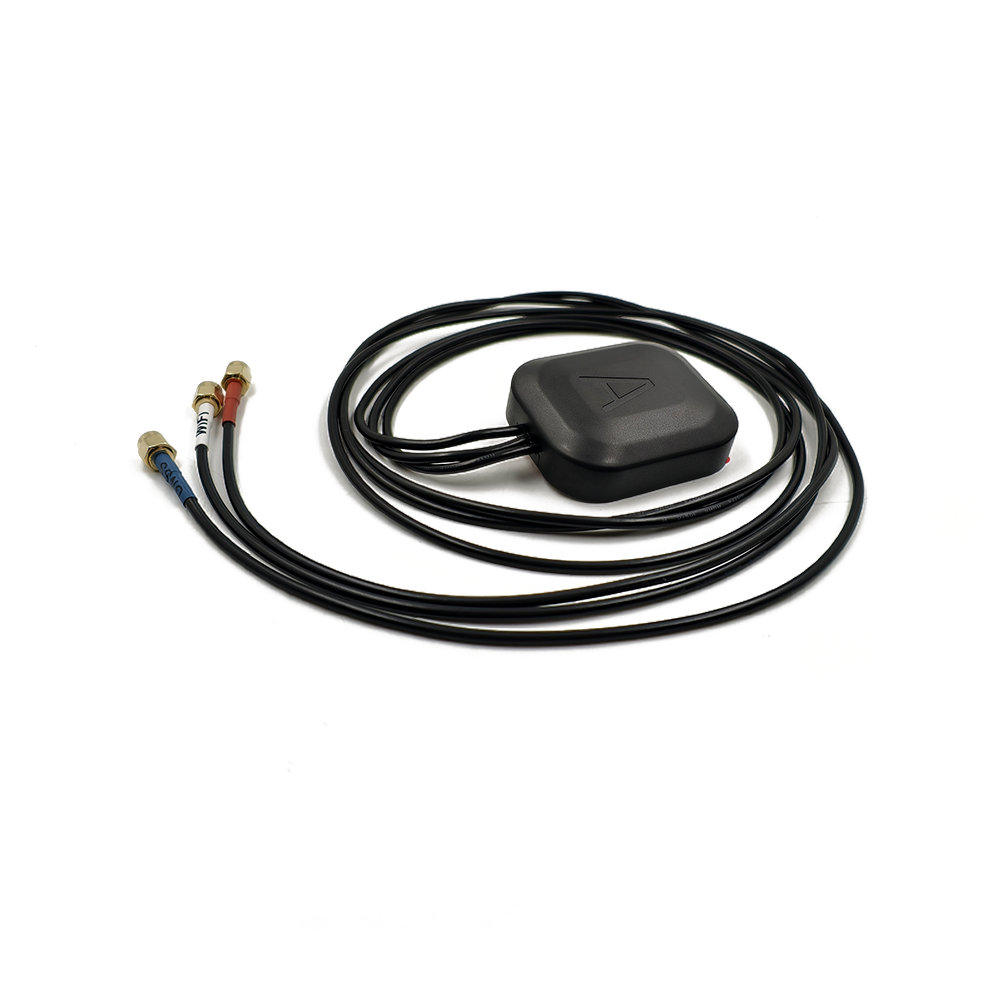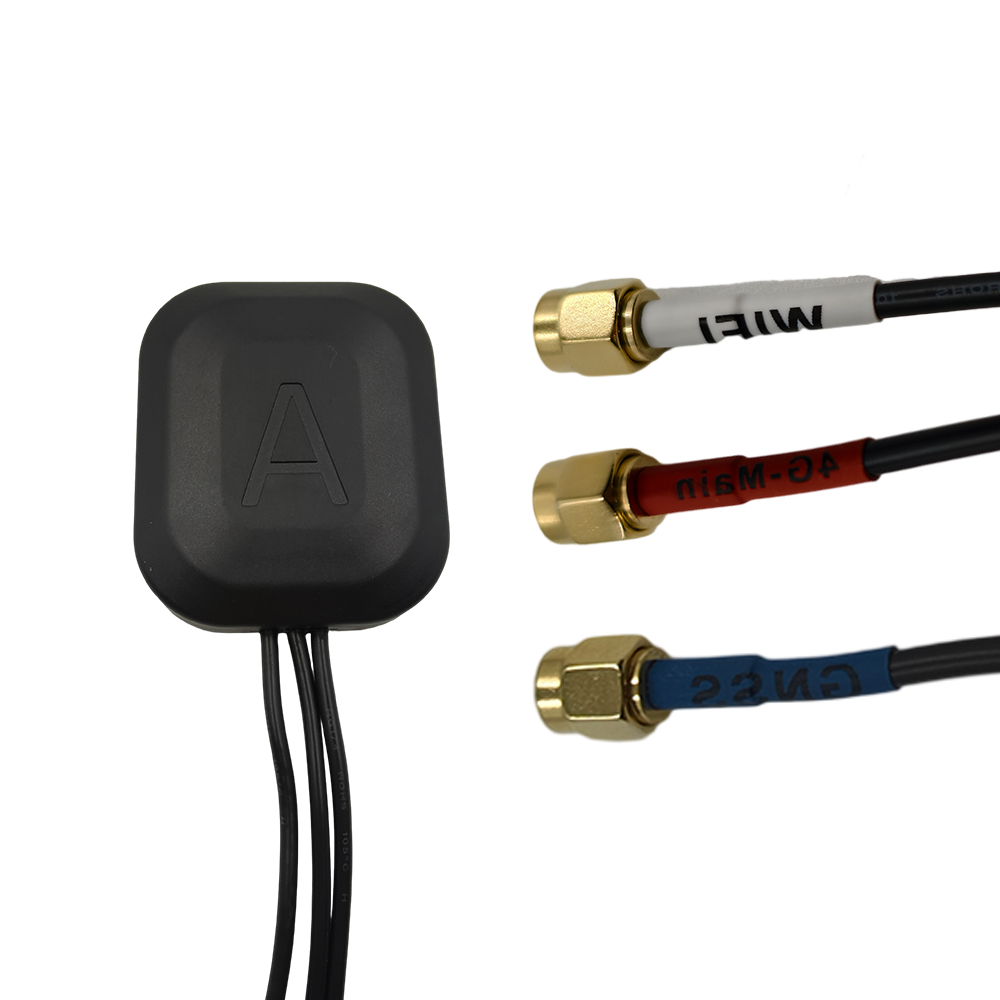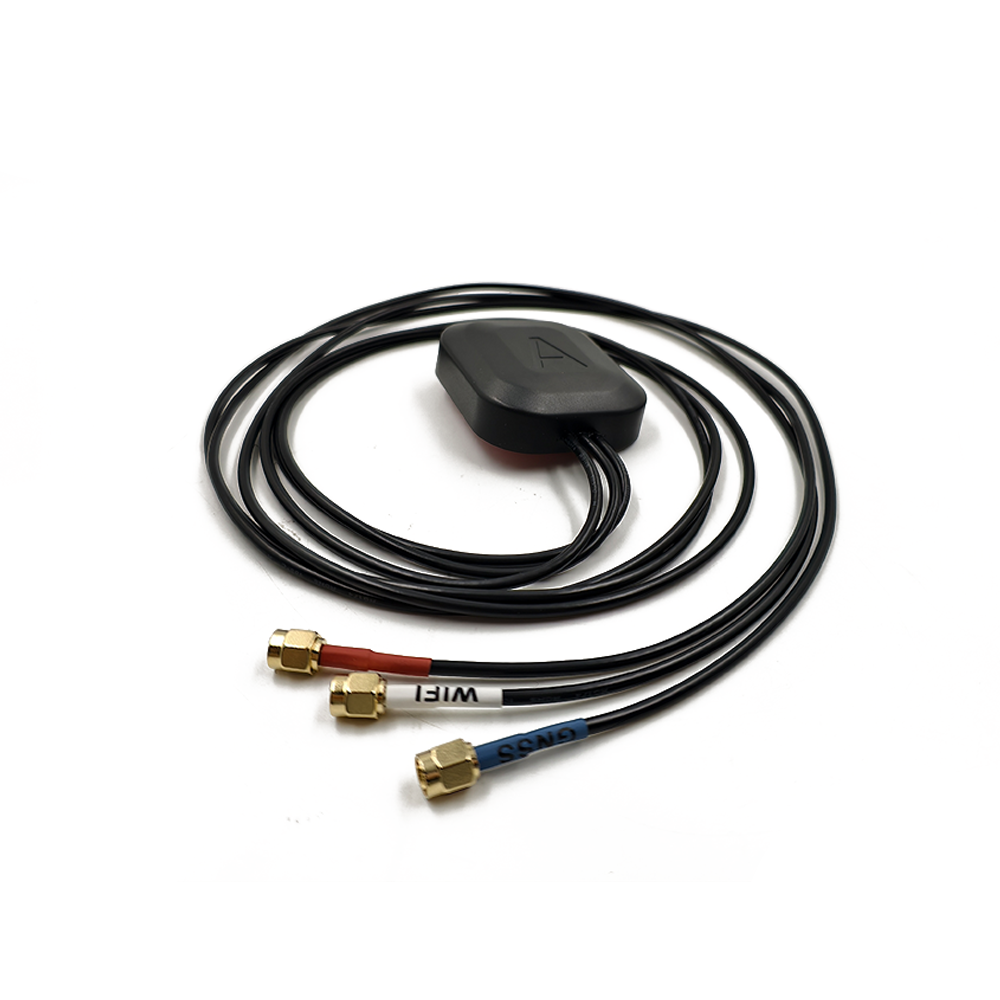The 30dB high gain RTK antenna’s unique combination of high gain, interference resistance, and extended range has made it a critical component in a wide range of industries. As GNSS technology evolves and new applications emerge, the antenna’s role is expanding further. This section explores the key applications of the 30dB high gain RTK antenna, as well as the future trends that will shape its development.
5.1 Key Applications
The 30dB high gain RTK antenna is most valuable in applications where standard RTK antennas struggle to deliver centimeter-level accuracy—specifically, in challenging environments, large-scale operations, or applications requiring high reliability. Below are the most prominent use cases.
5.1.1 Precision Agriculture
Precision agriculture relies on RTK technology to optimize crop yields, reduce resource waste, and lower costs. Farmers use RTK-guided tractors, harvesters, and drones to perform tasks like planting, fertilizing, and spraying with centimeter-level accuracy. The 30dB high gain RTK antenna is ideal for this industry because it can operate in the challenging environments common in agriculture: dense crop canopies, tree-lined fields, and remote rural areas with sparse base stations.
Use Cases in Precision Agriculture:
Guided Tractors and Harvesters: A tractor equipped with a 30dB high gain antenna can maintain a straight path (within 1–2 cm accuracy) while planting seeds or applying fertilizer, even when operating near tall crops (e.g., corn, wheat) that block GNSS signals. The antenna’s high gain amplifies weak signals through the canopy, and its narrow beamwidth reduces multipath interference from the ground.
Drone-Based Crop Monitoring: Drones used for crop health monitoring (e.g., multispectral imaging) require precise positioning to ensure images are aligned correctly. The 30dB high gain antenna allows drones to operate over large fields (up to 25 km from the base station) and in areas with tree cover, ensuring consistent positioning accuracy. For example, a drone can fly over a 1000-acre cornfield, capturing images with 1 cm alignment accuracy, which helps farmers identify areas of stress (e.g., drought, pest infestations) more effectively.
Irrigation System Positioning: Precision irrigation systems (e.g., center pivots) use RTK to position sprinklers and ensure even water distribution. The 30dB high gain antenna ensures the irrigation system maintains accuracy even in remote areas, where base station signals are weak. This reduces water waste and ensures crops receive the right amount of moisture.
Example: A large-scale soybean farm in Iowa uses 10 RTK-guided tractors equipped with 30dB high gain antennas. The farm has a single solar-powered base station (3 W) located in the center of the 6000-acre property. The 30dB antennas allow the tractors to operate up to 20 km from the base station, covering the entire farm without additional base stations. The tractors plant soybeans with 1.5 cm accuracy, reducing seed waste by 15% compared to standard RTK antennas.
5.1.2 Autonomous Vehicles and Drones
Autonomous vehicles (e.g., self-driving cars, trucks) and drones (e.g., delivery drones, inspection drones) require continuous, high-precision positioning to operate safely. A momentary loss of signal or drop in accuracy can lead to accidents, missed deliveries, or failed inspections. The 30dB high gain RTK antenna addresses this need by providing a robust signal link, even in dynamic and obstructed environments.
Use Cases in Autonomous Vehicles and Drones:
Self-Driving Cars in Urban Areas: Urban canyons (tall buildings) block GNSS signals and cause multipath interference, making it hard for standard antennas to maintain accuracy. The 30dB high gain antenna’s narrow beamwidth focuses on direct satellite signals, while its high gain amplifies weak signals from cell towers (for cellular-based RTK). This ensures the car maintains 1–2 cm accuracy, critical for navigating busy streets and avoiding collisions.
Delivery Drones in Suburban Areas: Delivery drones often operate in suburban areas with trees, power lines, and houses that block GNSS signals. The 30dB high gain antenna allows drones to track satellites through tree cover and receive correction data from distant base stations (up to 15 km). For example, a delivery drone can fly from a warehouse to a customer’s house (10 km away) through a suburban neighborhood, maintaining 2 cm accuracy to land safely on the customer’s porch.
Industrial Drones for Inspection: Drones used for inspecting power lines, wind turbines, or oil pipelines often operate in remote or harsh environments (e.g., mountainous regions, offshore platforms). The 30dB high gain antenna amplifies weak GNSS and correction signals, allowing the drone to complete inspections without signal loss. For example, a wind turbine inspection drone can fly up to 25 km from the base station, capturing high-resolution images of the turbine blades with 1 cm accuracy, which helps detect cracks or damage early.
Example: A ride-sharing company testing self-driving cars in downtown Chicago uses 30dB high gain RTK antennas. The cars operate in an area with tall skyscrapers (urban canyons) and heavy traffic. The 30dB antennas amplify weak GPS and Galileo signals, while the beam steering system adjusts to track satellites as the car moves. The cars maintain 1.2 cm accuracy, allowing them to navigate lanes precisely and avoid pedestrians and other vehicles.
5.1.3 Construction and Surveying
Construction and surveying require precise positioning to ensure projects adhere to design specifications, reduce rework, and improve safety. Surveyors use RTK rovers to map construction sites, lay out foundation walls, and install structural components. The 30dB high gain RTK antenna is ideal for this industry because it can operate near tall buildings, heavy machinery (which emits EMI), and in large construction sites with a single base station.
Use Cases in Construction and Surveying:
Site Mapping and Layout: A surveyor using a 30dB high gain antenna can map a large construction site (e.g., a new airport or highway) with centimeter-level accuracy, even when the site is surrounded by trees or existing buildings. The antenna’s high gain amplifies weak GNSS signals, and its filtering system blocks EMI from construction machinery (e.g., cranes, bulldozers).
High-Rise Construction: When building skyscrapers, surveyors need to position structural components (e.g., steel beams, concrete slabs) with extreme accuracy. The 30dB high gain antenna allows surveyors to track satellites from the top of the building (where signals are often weak due to height) and receive correction data from a base station on the ground. This ensures components are aligned within 1 cm, preventing structural issues.
Underground Construction: For underground projects (e.g., tunnels, subway systems), the 30dB high gain antenna can be used in conjunction with a local base station inside the tunnel. The antenna’s high gain amplifies the base station’s correction signals, allowing surveyors to track the tunnel’s progress with centimeter-level accuracy. For example, a subway tunnel construction project in London uses 30dB high gain antennas to ensure the tunnel bores align correctly with existing stations, reducing the risk of costly rework.
Example: A construction company building a new stadium in Los Angeles uses 30dB high gain RTK antennas for surveying and layout. The stadium site is 50 acres, with existing buildings on three sides and heavy machinery operating on-site. The company has a single base station located in the center of the site. The 30dB antennas allow surveyors to work up to 15 km from the base station (covering the entire site) and maintain 1 cm accuracy, even near the existing buildings and machinery. This has reduced rework by 20% compared to using standard RTK antennas.
5.1.4 Geospatial Mapping and Remote Sensing
Geospatial mapping and remote Sensing
Geospatial mapping and remote sensing involve capturing detailed data about the Earth’s surface for applications like topographic mapping, environmental monitoring, and disaster response. These tasks require precise positioning to ensure data (e.g., satellite imagery, LiDAR scans) is georeferenced correctly—meaning each data point is tied to a specific latitude, longitude, and elevation. The 30dB high gain RTK antenna is critical here because it enables mapping systems to operate in remote or obstructed areas (e.g., mountain ranges, tropical rainforests) and maintain accuracy over large distances.
Use Cases in Geospatial Mapping and Remote Sensing:
LiDAR Mapping for Topography: LiDAR (Light Detection and Ranging) systems use laser pulses to create 3D maps of the Earth’s surface. A LiDAR drone or aircraft equipped with a 30dB high gain RTK antenna can georeference each laser pulse with centimeter-level accuracy, even when flying over dense forests or mountainous terrain. The antenna’s high gain amplifies weak GNSS signals through tree canopies or over long distances, ensuring the LiDAR data is aligned correctly with existing maps. For example, a LiDAR drone mapping a tropical rainforest in the Amazon can fly up to 20 km from a base station, capturing 3D data of the forest canopy with 1.5 cm accuracy. This data helps ecologists track deforestation and monitor biodiversity.
Satellite Imagery Ground Truthing: To validate the accuracy of satellite imagery (e.g., from Landsat or Sentinel), researchers use ground-based RTK rovers to collect “ground truth” data—precise coordinates of specific points (e.g., a riverbank, a forest edge). The 30dB high gain antenna allows these rovers to operate in remote areas (e.g., the Sahara Desert, the Arctic tundra) where base station signals are weak. For instance, a research team studying glacial retreat in Greenland uses 30dB high gain antennas on their RTK rovers. The rovers collect ground truth data up to 25 km from a solar-powered base station, ensuring the satellite imagery of the glaciers is calibrated correctly.
Disaster Response Mapping: After natural disasters like earthquakes or floods, emergency responders need fast, accurate maps to identify affected areas and plan relief efforts. Drones equipped with 30dB high gain RTK antennas can quickly map disaster zones, even in areas with damaged infrastructure (e.g., downed power lines, collapsed buildings) that block GNSS signals. The antenna’s high gain ensures the drone maintains positioning accuracy, allowing responders to create detailed maps of flooded areas or collapsed structures within hours. For example, after a hurricane in Florida, a drone with a 30dB high gain antenna mapped a 50-square-kilometer area, providing responders with 1 cm accuracy maps to locate trapped residents and coordinate rescue efforts.
Example: A geospatial mapping company working on a topographic survey of the Rocky Mountains uses 30dB high gain RTK antennas on their LiDAR-equipped aircraft. The aircraft flies at an altitude of 5,000 meters, covering 1,000 square kilometers per day. The 30dB antennas allow the aircraft to receive correction data from a single base station located in a valley, 20 km from the survey area. The LiDAR data is georeferenced with 1.2 cm accuracy, enabling the company to create detailed topographic maps that are used for highway construction and wildlife conservation planning.
5.2 Future Trends
As GNSS technology advances and new industry needs emerge, the 30dB high gain RTK antenna is poised to evolve in several key directions. These trends will focus on improving performance, reducing limitations, and expanding the antenna’s applicability to new use cases.
5.2.1 Integration with 5G and Next-Generation GNSS
The rollout of 5G networks and the expansion of next-generation GNSS constellations (e.g., GPS III, Galileo Second Generation, BeiDou-3) will drive significant improvements in 30dB high gain RTK antenna design.
5G-Enabled RTK: 5G networks offer higher bandwidth, lower latency, and wider coverage than 4G, making them ideal for transmitting large volumes of RTK correction data. Future 30dB high gain antennas will be integrated with 5G modems, allowing rovers to receive correction data from cloud-based RTK services (instead of local base stations). This “network RTK” approach will eliminate the need for on-site base stations, reducing costs and increasing flexibility. For example, a self-driving car with a 5G-integrated 30dB high gain antenna could receive correction data from a cloud service, enabling centimeter-level accuracy in any area with 5G coverage—even in remote regions where local base stations are unavailable.
Next-Generation GNSS Support: Next-generation GNSS constellations use new frequency bands (e.g., GPS III’s L1C band, Galileo’s E6 band) and advanced signal formats that offer higher accuracy and better resistance to interference. Future 30dB high gain antennas will be designed to support these new bands, allowing rovers to track more satellites and achieve even higher precision. For instance, an antenna that supports GPS III’s L1C band (which has a more robust signal than older bands) could maintain centimeter-level accuracy in urban canyons with fewer satellites, reducing the risk of signal loss.
5.2.2 Miniaturization and Low-Power Design
As applications like wearable devices and small drones demand smaller, more power-efficient components, 30dB high gain RTK antennas will undergo significant miniaturization while maintaining performance.
Miniaturized Arrays: Advances in microelectronics (e.g., microstrip patch technology, MEMS—Micro-Electro-Mechanical Systems) will allow manufacturers to create smaller radiating arrays. A future 30dB high gain antenna could be the size of a credit card, making it suitable for wearable devices (e.g., precision tracking devices for hikers or athletes) or small delivery drones. For example, a small delivery drone (weighing less than 2 kg) could use a miniaturized 30dB high gain antenna to maintain centimeter-level accuracy, enabling it to deliver packages to small balconies or narrow driveways.
Ultra-Low-Power Components: New materials and circuit designs will reduce the power consumption of 30dB high gain antennas. For instance, researchers are developing “energy-harvesting” LNAs that use ambient electromagnetic energy (e.g., from 5G signals) to power themselves, reducing the antenna’s reliance on batteries. This would be particularly valuable for battery-powered devices like portable survey rovers or wildlife tracking collars, which need to operate for weeks or months without recharging.
5.2.3 AI-Driven Adaptive Beam Steering and Interference Mitigation
Artificial intelligence (AI) and machine learning (ML) will play an increasingly important role in optimizing 30dB high gain RTK antenna performance, particularly in dynamic or high-interference environments.
AI-Powered Beam Steering: Current beam steering systems rely on pre-programmed algorithms to adjust the antenna’s beam direction. Future systems will use AI to learn from real-time data (e.g., satellite positions, signal strength, interference levels) and optimize beam steering dynamically. For example, an AI-driven system could predict the movement of satellites and adjust the beam direction in advance, ensuring the antenna maintains a strong signal even as the rover moves. This would be particularly useful for fast-moving rovers like autonomous trucks or racing drones.
ML-Based Interference Mitigation: ML algorithms will enable 30dB high gain antennas to detect and block new types of interference (e.g., jamming signals from malicious actors, unexpected radio signals from new devices) in real time. The algorithm would analyze the frequency, amplitude, and pattern of incoming signals, classifying them as “desired” (GNSS, correction data) or “undesired” (interference). It would then adjust the antenna’s filters or beam direction to block the interference. For instance, in a military application, an AI-equipped 30dB high gain antenna could detect and block jamming signals, ensuring the RTK system maintains accuracy even in hostile environments.
5.2.4 Multi-Functional Integration
Future 30dB high gain RTK antennas will integrate additional functions to reduce system complexity and cost, making them more versatile for multi-tasking applications.
Combined RTK and Communication Antennas: Instead of using separate antennas for RTK and communication (e.g., 5G, Wi-Fi), future designs will integrate both functions into a single antenna. This “dual-purpose” antenna would reduce the size and weight of the rover, which is critical for small drones or autonomous robots. For example, a delivery drone could use a single 30dB high gain antenna to both receive RTK correction data and communicate with the delivery company’s server via 5G, eliminating the need for two separate antennas.
RTK + Environmental Sensing: Some 30dB high gain antennas will integrate environmental sensors (e.g., temperature, humidity, air quality sensors) to collect additional data while maintaining positioning accuracy. This would be valuable for applications like precision agriculture (where temperature and humidity data help optimize irrigation) or environmental monitoring (where air quality data is combined with geospatial data to track pollution). For instance, a tractor-mounted 30dB high gain antenna with integrated humidity sensors could adjust its planting depth based on soil humidity levels, while maintaining centimeter-level positioning accuracy.
Conclusion
The 30dB high gain RTK antenna has established itself as a transformative technology in the field of precision positioning, addressing the critical limitations of standard RTK antennas in challenging environments. Throughout this series, we have explored its core characteristics, design principles, working mechanisms, advantages, challenges, applications, and future trends—painting a comprehensive picture of why this antenna has become indispensable across industries like precision agriculture, autonomous systems, construction, and geospatial mapping.
At its core, the 30dB high gain RTK antenna’s value lies in its ability to bridge the gap between theoretical RTK accuracy and real-world performance. By delivering a 30dB gain—significantly higher than standard alternatives—it amplifies weak GNSS signals and base station correction data, enabling centimeter-level accuracy in environments where standard antennas fail: dense forests, urban canyons, remote rural areas, and disaster zones. Its narrow beamwidth, when paired with advanced beam steering and filtering, reduces multipath interference and blocks unwanted signals, further enhancing reliability.
The design and construction of the antenna are a testament to engineering precision: from the modular patch arrays and low-noise amplifiers that enable high gain, to the durable, weather-resistant housings that protect components in harsh conditions. These design choices are not arbitrary—they are tailored to address the unique needs of each application, whether it’s a tractor operating in a cornfield or a drone inspecting a wind turbine.
Of course, the 30dB high gain RTK antenna is not without challenges. Its narrow beamwidth limits angular coverage, its complexity increases cost, and its power consumption can be a burden for battery-powered devices. However, the mitigation strategies outlined—from dual-beam designs and AI-driven beam steering to low-power components and integrated systems—demonstrate that these challenges are not insurmountable. Manufacturers and engineers are continuously innovating to refine the antenna, making it more accessible and versatile.
The applications of the 30dB high gain RTK antenna are a testament to its impact. In precision agriculture, it reduces seed waste and optimizes resource use; in autonomous vehicles, it enhances safety by ensuring continuous, high-precision positioning; in construction, it reduces rework and speeds up project timelines; and in geospatial mapping, it enables accurate data collection in remote and disaster-stricken areas. Each application highlights how the antenna is not just a component—it is a enabler of efficiency, sustainability, and safety.
Looking to the future, the 30dB high gain RTK antenna is poised to evolve in exciting ways. Integration with 5G and next-generation GNSS will expand its reach; miniaturization and low-power design will make it suitable for new devices; AI-driven optimization will enhance its performance; and multi-functional integration will reduce complexity. These trends will ensure that the antenna remains at the forefront of precision positioning technology, adapting to new industry needs and technological advancements.
In summary, the 30dB high gain RTK antenna is more than just a high-gain device—it is a critical tool that empowers industries to achieve levels of precision and reliability that were once unattainable. As the demand for centimeter-level positioning continues to grow across sectors, the 30dB high gain RTK antenna will remain a key driver of innovation, helping to build a more efficient, safe, and sustainable world. Whether it’s a farmer optimizing crop yields, a construction company building skyscrapers, or a responder saving lives after a disaster, the 30dB high gain RTK antenna is quietly working behind the scenes to make precision possible.




































































 Language
Language
 En
En Cn
Cn Korean
Korean

 Home >
Home > 








 18665803017 (Macro)
18665803017 (Macro)













